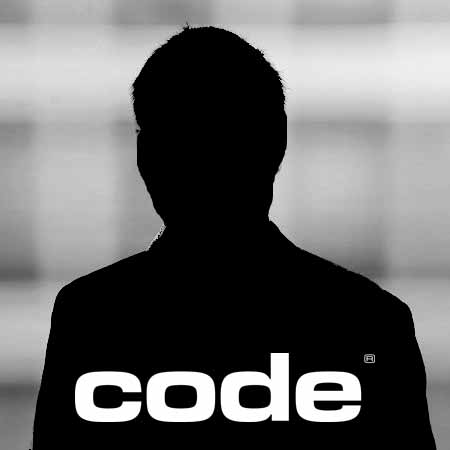The Gaziantep University Dental Hospital relies on the high-performance Code CR6000 to improve traceability and productivity within its sterilisation processes. Based in South Eastern Turkey within the Anatolia region, Gaziantep University has three medical facilities under its umbrella: a general hospital with 1,350 beds, a specialized oncology unit, and a dedicated dental faculty hospital.
Keeping the dental faculty, which also includes a specialty surgical department, supplied with traceable sterilised medical tools in first-class condition is a challenge in terms of the process itself and, more importantly, the accuracy of the incumbent’s system traceability.
At the central sterilisation unit, sets of surgical tools are received from numerous surgical rooms and locations. Almost inevitably, surgical tools became separated from their sets, were lost, or damaged.
Historically, the record-keeping of the equipment and the sterilisation process had been done manually by filling in forms. This was a time-consuming task, and one dependent on the accuracy of written data entry and the physical tracking of the surgical implements to their correct sets and ensuring that those surgical sets were complete. There were other challenges, of course, including the loss of surgical implements during the transfer process.
THE SOLUTION
The specialty hospital within the dental department decided to laser mark the surgical instruments and to integrate a PC-based sterilisation traceability and documentation system at its central sterilisation department. This move optimizes record-keeping and enhances traceability. To that end, and working with Systems Integrator OMED Ltd, who designed the system, the SterilO® Software Program was developed to trace surgical tools being used within the department and those needing to be cleaned, made sterile, and prepared for use in the next round of dental procedures.

Code barcode readers handily scan DPM barcodes laser-etched onto stainless steel tools like these.
Before the rollout, the surgical tools were engraved with a Data Matrix barcode via fibre laser technology, which does not compromise the integrity of the implement or compromise its stainless steel features. The Data Matrix barcode contained the unique ID serial number of each surgical instrument.
As accuracy and productivity were two of the drivers in the development of the SterilO® Software Program, the choice of the barcode reader chosen to perform that task had to have the performance and ergonomics to deliver. Gaziantep University Dental Faculty Hospital and OMED undertook trials with a range of DPM barcode readers to maximise the benefits of the system.
After extensive testing, the Code CR6000 was found to excel at reading laser-etched DPM Data Matrix barcodes on the surgical instruments. As well as an ergonomic form factor, this enhanced user experience also includes a vibration mode for indicating a good read, augmenting the traditional beep and LED flash. Users also found the CR6000 intuitive to use, and with little training, were able to utilise the barcode reader and the SterilO® Software Program with ease.
For hard-to-read shiny and curved surfaces, the CR6000 is designed with multiple illumination fields, where the reader intuitively selects the field that is most efficient at reading barcodes at different contrast levels.
The selection of the CR6000 was one of the easier decisions within the evaluation process, as EyÜp ÖgÜcÜ, Manager, OMED explains, “These key features, excellent performance and a plug-and-play installation, along with strong service support from local Turkish partner Elecom Bilisim in conjunction with Code, made the choice of the CR6000 an obvious one.
THE BENEFITS
The sterilisation and traceability system has led to a significantly better workflow in terms of placing the surgical tools in the appropriate sets easily in a time-saving fashion. As well as providing traceability of the surgical implements, the results of the Autoclave sterilisation process and cleaning machines have been incorporated within the documentation system. This means that the instruments and sets can now be traced to the corresponding patient, doctor, and dental consultation.
Due to the success of the system, the SterilO® Software Program is being acquired by an increasing number of other hospitals and dental units that have a central sterilisation unit and the goal of providing excellence.
THE RESULTS
Patient safety is the ultimate driver for implementing technology that enhances the accuracy of processes within healthcare. Ensuring traceability and being able to track surgical instruments using advanced data collection technology combined with the state-of-the art SterilO® Software Program has streamlined the sterilisation and record-keeping process. Return on investment is assured since SterilO® Software does much to prevent instrument loss. Productivity is also enhanced with much of the process now being automated.
As the Dental Faculty Hospital’s Central Sterilisation Unit notes, “As a provider of a truly critical service, we must be a source of excellence in the processes behind that service. The CR6000 has leveraged the SterilO® Software Program and is, in itself, a sign of the quality that we have brought together to drive the sterilisation unit to a new level of distinction and expertise.”
Feel free to contact us with any questions at info@codecorp.com or 801-495-2200.
Share This Post
Author

Staff Writer
Many of the talented and qualified staff at Code Corporation contribute to our blog. Our team members add a unique perspective to our communications efforts, and we are fortunate to have such a great cadre of writers as part of our company.
